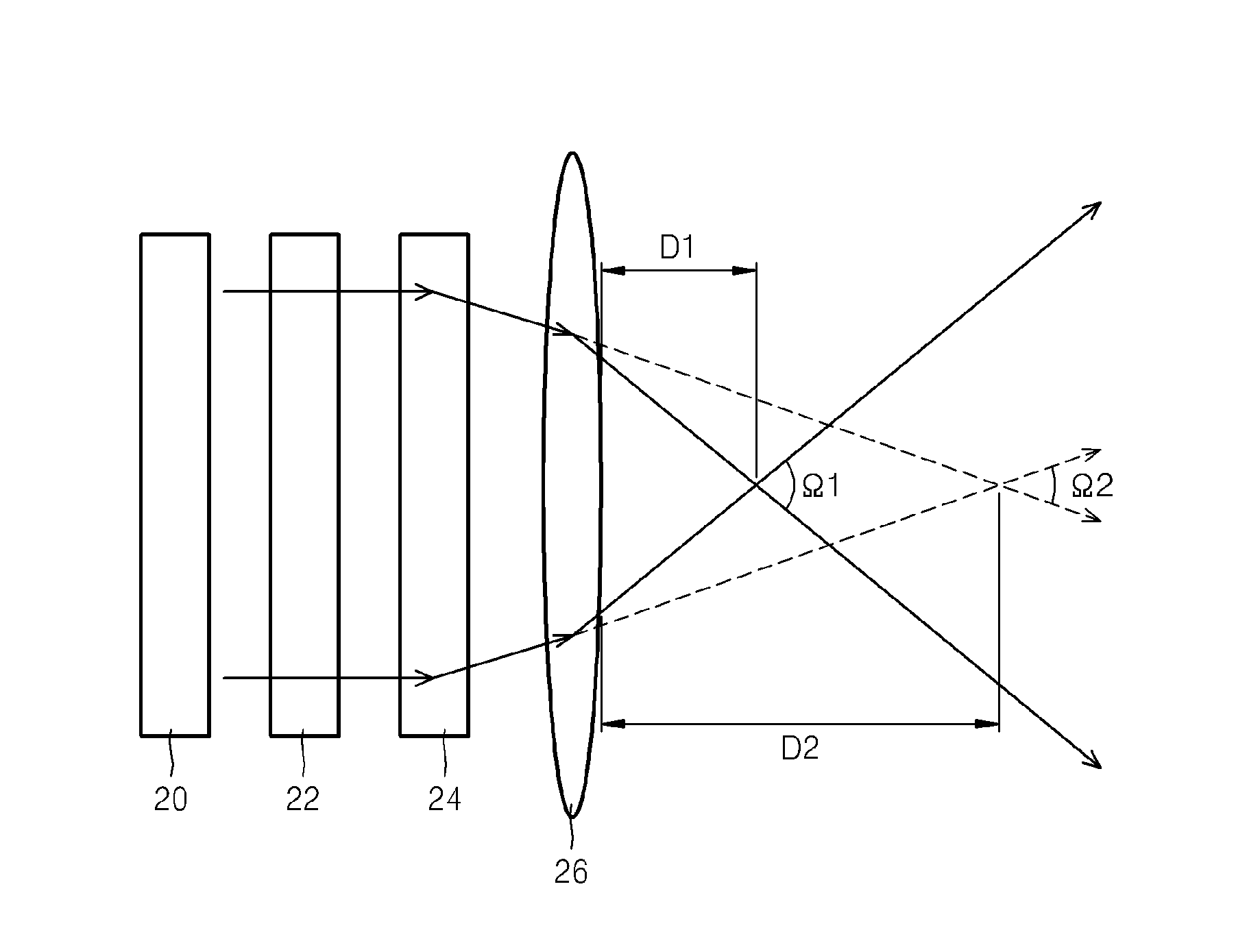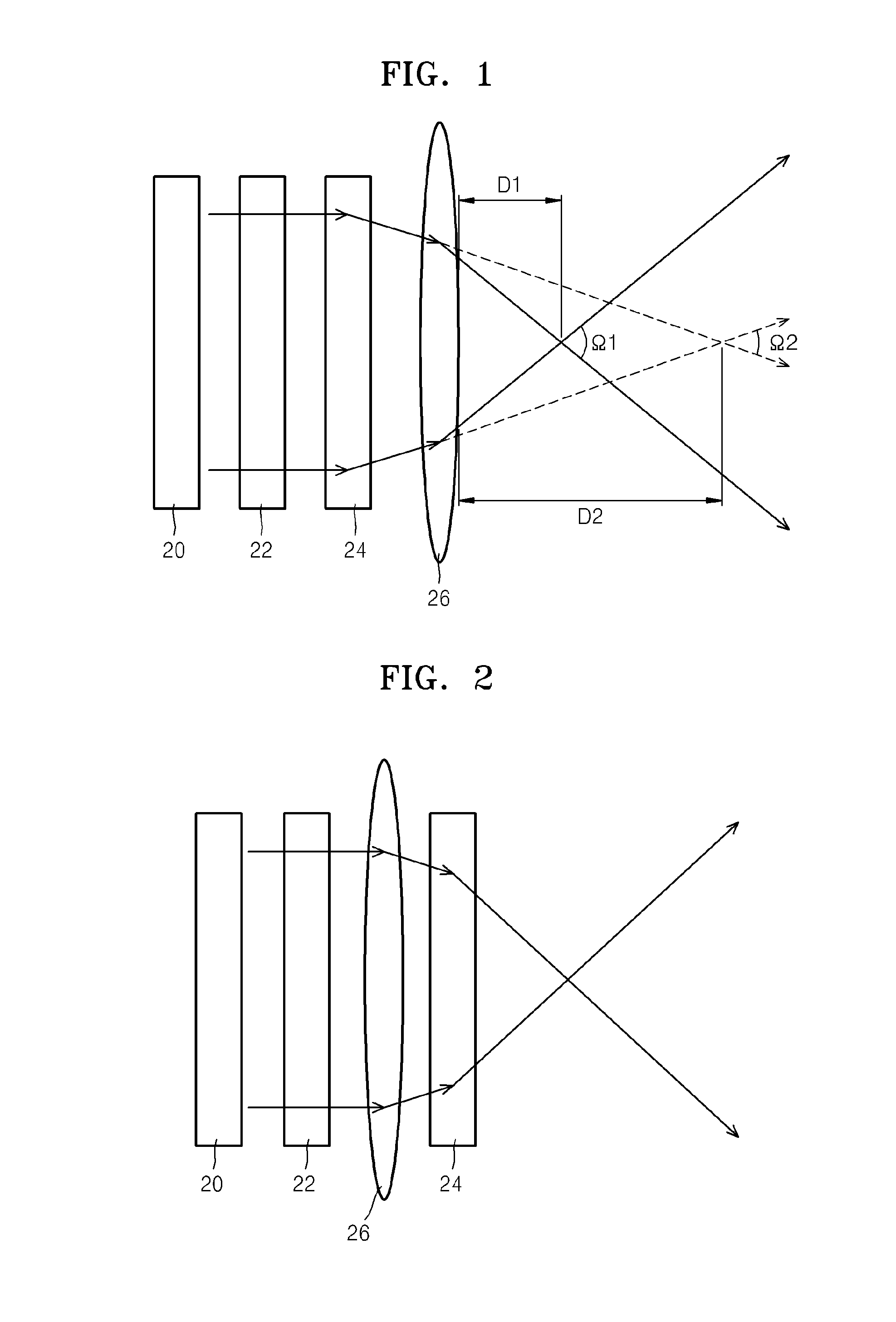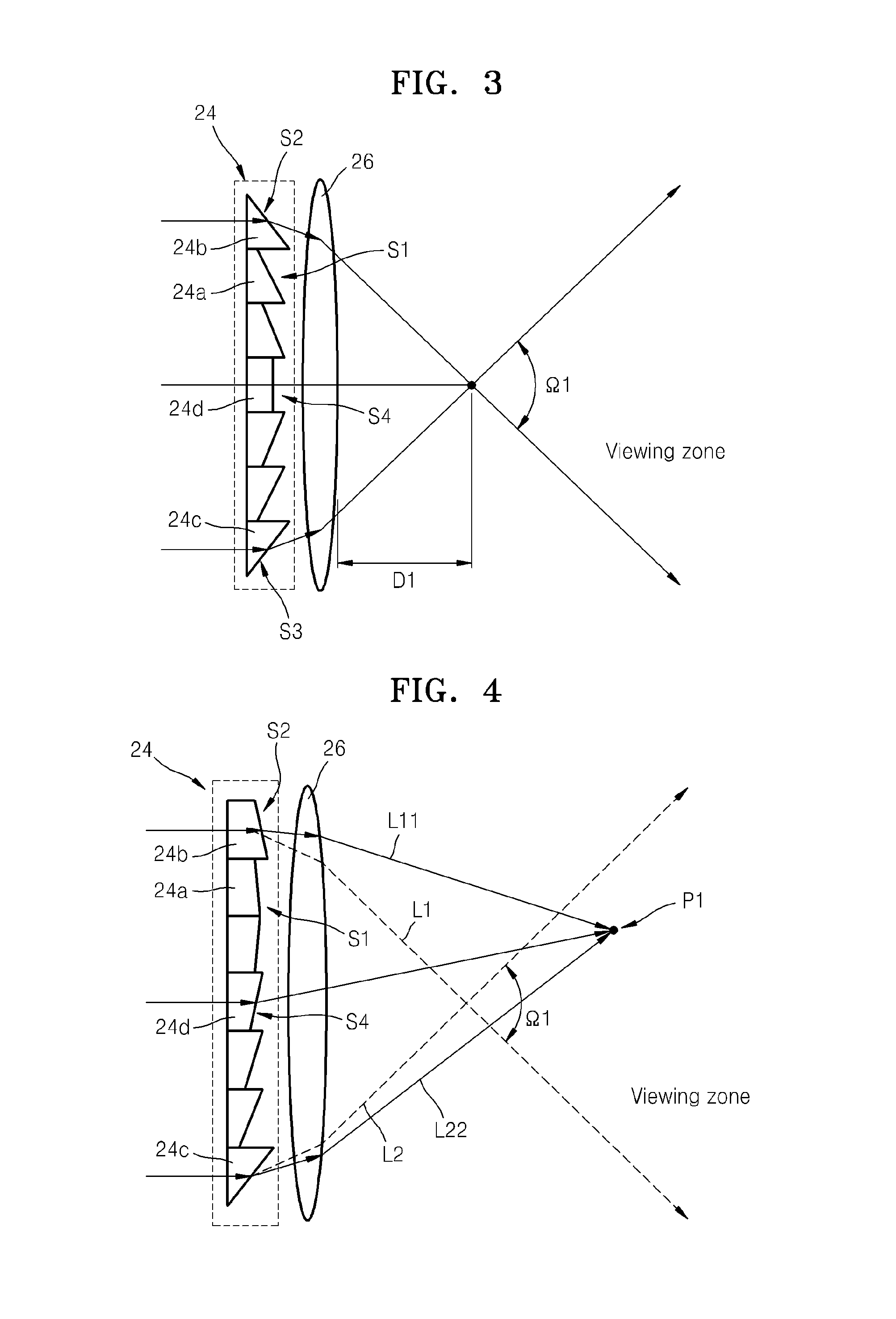Display including electrowetting prism array
a technology of electrowetting prisms and arrays, applied in the field of display, can solve the problems of reducing the viewing distance, reducing the viewing angle, and reducing the refractive power of light emitted, and achieve the effect of increasing the refractive power of ligh
- Summary
- Abstract
- Description
- Claims
- Application Information
AI Technical Summary
Benefits of technology
Problems solved by technology
Method used
Image
Examples
Embodiment Construction
[0036]Reference will now be made in detail to exemplary embodiments illustrated in the accompanying drawings, wherein like reference numerals refer to like elements throughout. In this regard, the present embodiments may have different forms and should not be construed as being limited to the descriptions set forth herein. Accordingly, the exemplary embodiments are merely described below, by referring to the figures, to explain aspects of the present description. In the drawings, the thicknesses of layers or regions are exaggerated for clarity.
[0037]FIG. 1 is a cross-sectional view of a display (hereinafter, referred to as a first display) including an electrowetting prism array according to an exemplary embodiment.
[0038]Referring to FIG. 1, the first display includes a light source 20, a liquid crystal panel 22 for creating an image, an electrowetting prism array (hereinafter, prism array) 24 for controlling a traveling direction of the image output from the liquid crystal panel 22...
PUM
 Login to View More
Login to View More Abstract
Description
Claims
Application Information
 Login to View More
Login to View More - R&D
- Intellectual Property
- Life Sciences
- Materials
- Tech Scout
- Unparalleled Data Quality
- Higher Quality Content
- 60% Fewer Hallucinations
Browse by: Latest US Patents, China's latest patents, Technical Efficacy Thesaurus, Application Domain, Technology Topic, Popular Technical Reports.
© 2025 PatSnap. All rights reserved.Legal|Privacy policy|Modern Slavery Act Transparency Statement|Sitemap|About US| Contact US: help@patsnap.com



